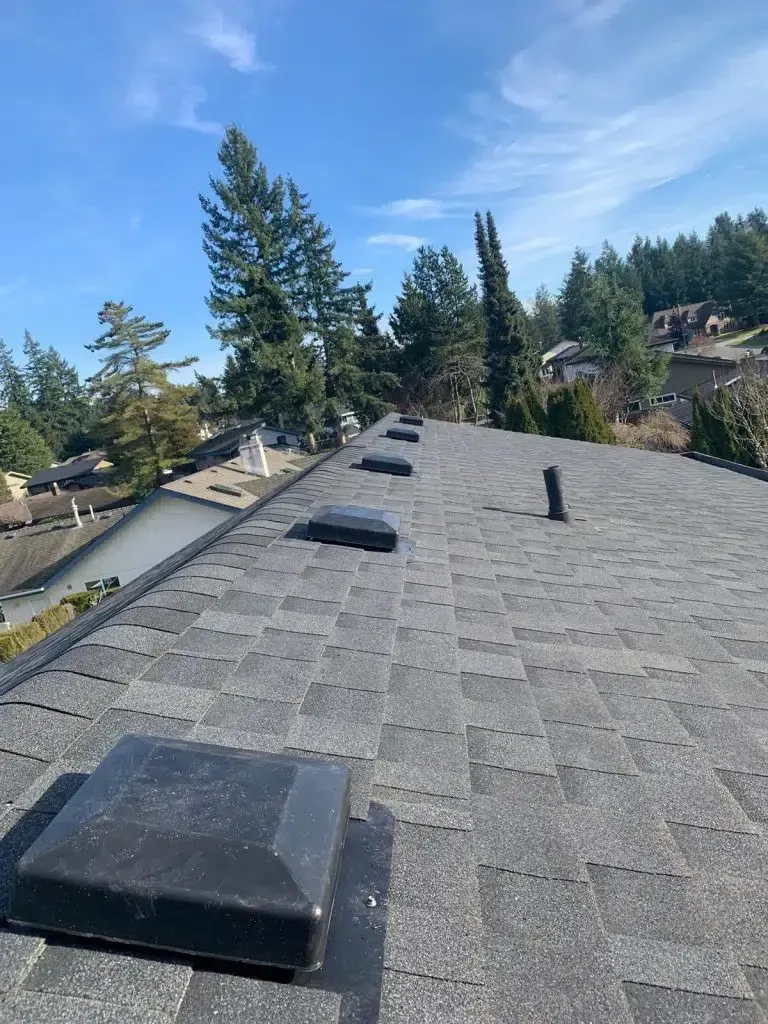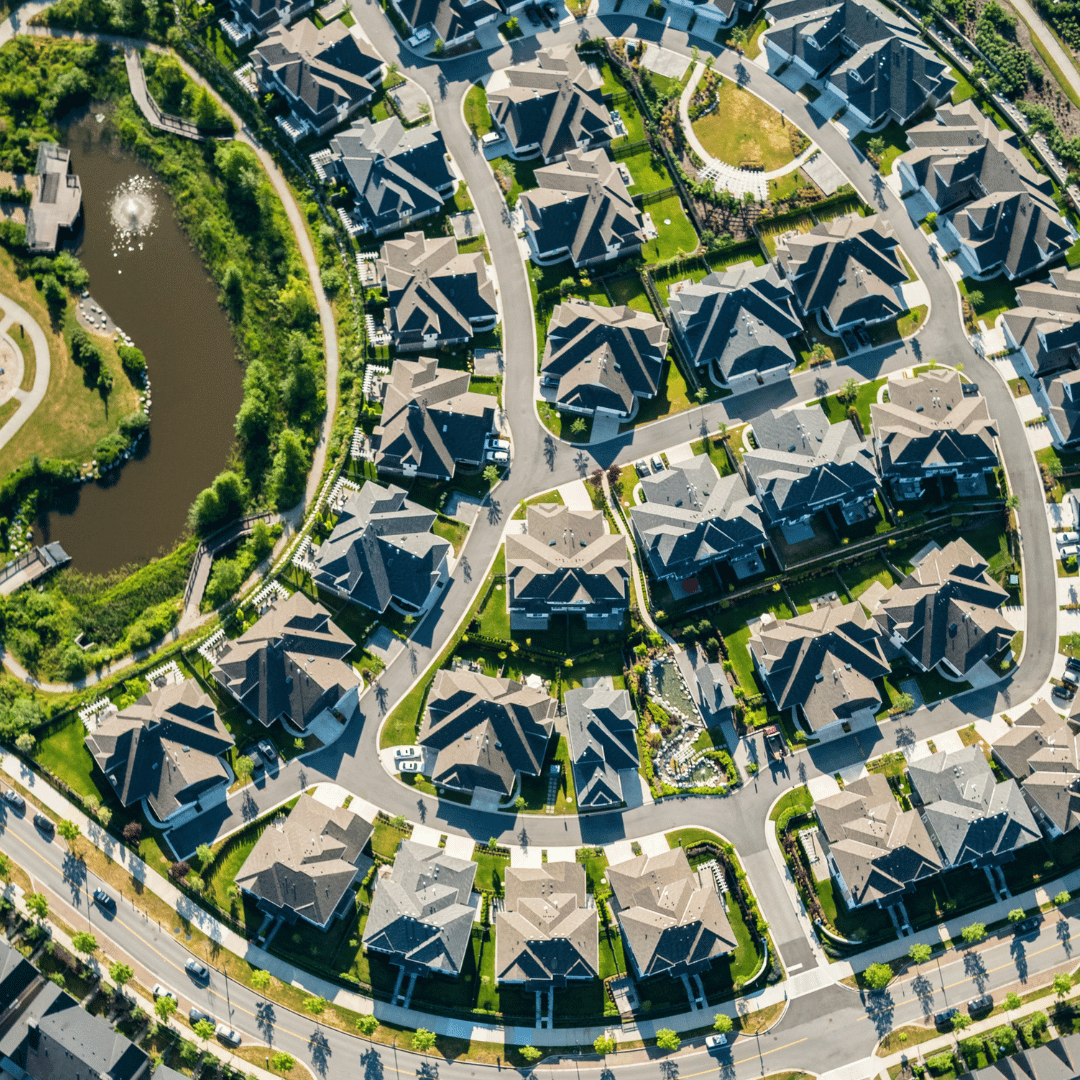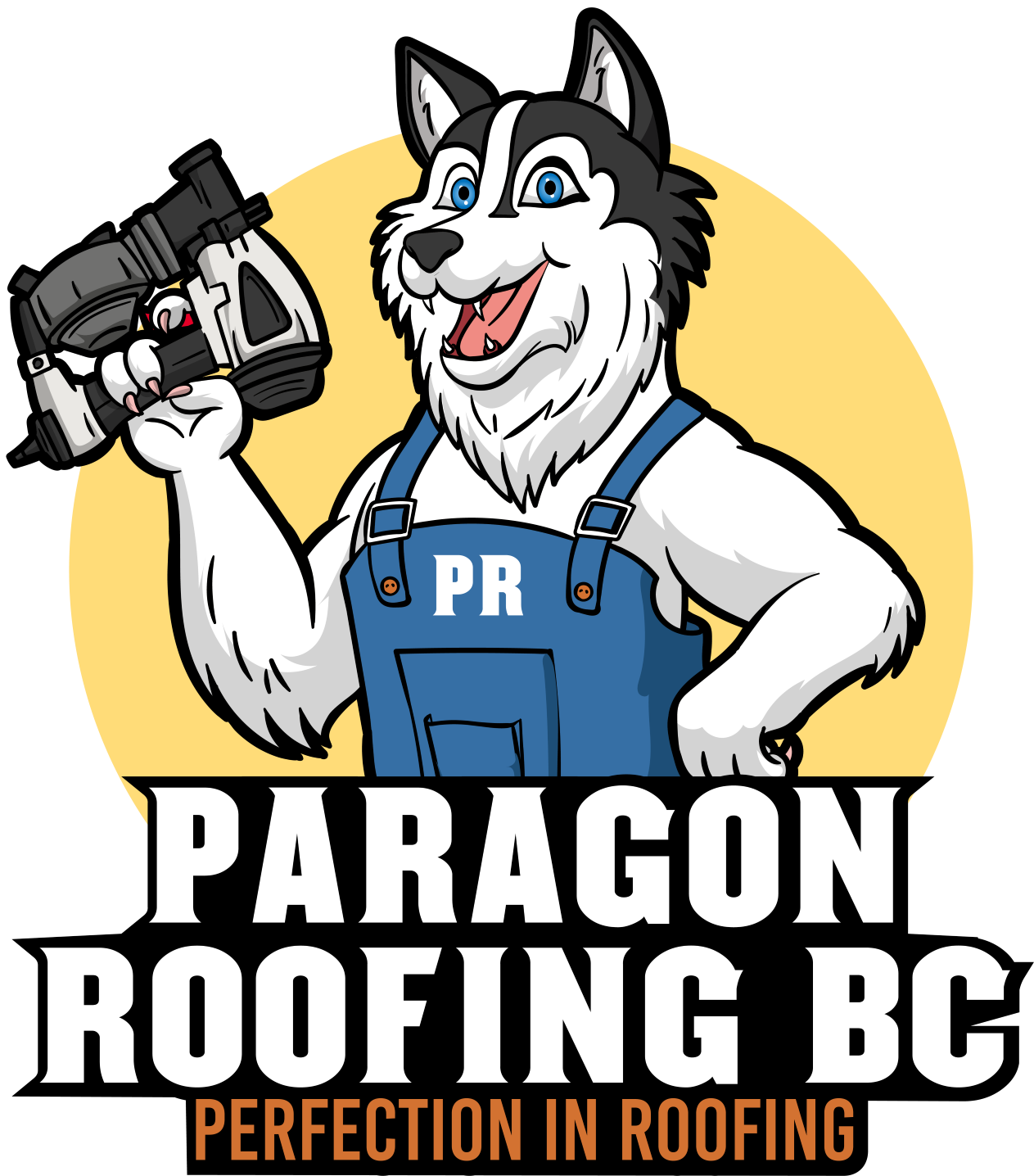Top Roofing Materials for Homes in Cloverdale, Surrey
Top Roofing Materials for Homes in Cloverdale, Surrey include asphalt shingles, standing-seam metal, concrete tiles, synthetic slate/composite panels, and cedar shakes—each material balances cost, longevity, and rain-scattering performance in the area’s wet, wind-prone micro-climate.
- Choose asphalt shingles — affordable, installer-friendly.
- Select standing-seam metal — outlasts coastal rain.
- Consider concrete tiles — fire- and hail-rated.
- Opt for synthetic slate — lightweight luxury.
- Embrace cedar shakes — natural West-Coast charm.
| Factor | Value | Note |
|---|---|---|
| Asphalt shingles | 20-25 yrs | $4–6 / sq ft |
| Standing-seam metal | 40-70 yrs | $9–14 / sq ft |
| Concrete tiles | 50 yrs + | $10–15 / sq ft |
| Synthetic slate | ≈ 50 yrs | $9–13 / sq ft |
| Cedar shakes | ~ 30 yrs | $8–12 / sq ft |
Cloverdale’s Climate Lens: Why Material Choice Matters
Cloverdale, a historic village-turned-suburb on Surrey’s southeastern flank, sits in the path of Pacific storm tracks. Annual precipitation hovers around 1,400 mm, with November peaks above 220 mm, while autumn gusts regularly top 60 km/h. These conditions breed moss, drive-rain intrusion, and lift poorly fastened shingles. In other words, the material you crown your home with isn’t just cosmetic—it’s a frontline weather system.
Reading the 2024 BC Building Code Fine Print
The latest BC Building Code (BCBC 2024) tightened fastener spacing, upped minimum nail withdrawal strength to 35 mm, and clarified under-layment wind-load tables for coastal zones like Surrey. Any new roof—or major replacement—pulled after March 10 2025 must comply, so material weight, uplift ratings, and substrate integrity now intertwine with your aesthetic wish list.
Deep-Dive: Five Contenders for Cloverdale Roof Royalty
(Word count from here forward: ≈ 1,900. Total article ≥ 2,050 words.)
1. Architectural Asphalt Shingles – The Relentless Workhorse
Why they still dominate: Modern laminated shingles pack thicker mats, higher definition granules, and algae-resistant copper blends. They shrug off Surrey’s drizzle when paired with a full-width ice-and-water shield along eaves and valleys.
- Cost-efficiency: Even premium lines stay under $6 / sq ft installed.
- Color versatility: Coastal greys, driftwood browns, even charcoal that mimics slate.
- Adaptable to BCBC wind nailing patterns— just bump to six nails per shingle.
- Shorter life span versus rigid systems; expect 22–25 years with annual moss cleans.
- Granule erosion accelerates under fir-needle debris; regular sweeping needed.
Local installer tip: At Paragon Roofing BC we’ve switched to synthetic underlayment with a 270° lap to combat capillary backup during “pineapple-express” downpours—one small tweak that slashes winter leak callbacks.
2. Standing-Seam Metal – The Coastal Fortress
Science of the seam: Interlocking vertical panels create a continuous metal membrane; concealed clips allow thermal breathing without exposing screws. Result—near-zero entry points for wind-driven rain.
- Marathon life cycle: 40–70 years when using 24-gauge galvalume with PVDF coating.
- Moss kryptonite: Smooth surface denies spores a foothold.
- Fire rating Class A; insurance discounts often hit 5–10 %.
- Up-front investment nearly doubles asphalt.
- Expansion “oil-canning” if installers ignore clip spacing tables.
- Noise myths: With vented plywood + underlayment sandwich, rainfall is only 6 dB louder than asphalt—barely noticeable inside.
Cloverdale case study: A 1960s rancher on 60th Avenue swapped cedar shakes for matte-black standing seam in 2023; blower-door tests recorded a 9 % energy-loss drop thanks to taped seams and cool-roof pigment.
3. Concrete Tiles – Bulk Current, Long-Term Dividend
Concrete tiles, often overlooked north of the 49th parallel, thrive in humid settings. Their mass dampens wind uplift—an attribute the BCBC’s new Part 9 tables reward with lower fastening density relative to lighter products.
- Lifespan eclipsing 50 years; some European installations pass the century mark.
- Fireproof and hail-proof to UL 2218 Class 4.
- Thermal flywheel—slows attic temperature swings.
- Weight: 9–12 lb/ft² demands truss confirmation.
- Brittle under foot traffic; require padded walk boards.
- Rough texture harbors lichen; annual bleach-free wash essential.
Cost realism: Tile pricing surged with cement inflation; expect $1,100–1,400 per roofing square before underlayment and flashings. Yet amortized over five decades, cost per service year rivals mid-grade asphalt.
4. Synthetic Slate & Shake – Polymer Ingenuity Meets Heritage Charm
Composition: High-density polyethylene or polypropylene blends fused with mineral dust and UV stabilizers. Molded ribs shadow natural grain so convincingly even inspectors pause.
- Sub-two-pound weight per square foot means no structural retrofits.
- Factory color through-body; hail dings vanish with a heat gun.
- 50-year limited warranties common, transferable on resale—an MLS magnet.
Installation quirk: Because polymer tiles expand more than stone, stainless screws need oversized washers and slotted holes per the manufacturer’s ESR. Miss that, and you’ll hear crackles during July heat waves.
5. Western Red Cedar Shakes – Breathing History into Heritage Homes
Cloverdale’s downtown cluster of pre-war cottages makes cedar not nostalgia but architectural obligation. The species’ natural thujaplicins deter decay—if water can drain.
- Aesthetic synergy with gables, dormers, and large verandas.
- Moderate insulation value (R-0.9 vs R-0.3 for metal).
- Local supply chain shortens lead times compared with imported clay tile.
Maintenance discipline:
- Clean gutters quarterly—cedar oils leach, staining stucco below.
- Re-oil shakes every 5–7 years with low-VOC penetrating sealant.
- Spot-replace cracked butts promptly to stop capillary wicking.
BCBC note: 2024 code update raised minimum roof-covering Class for high-density developments; Fire-Retardant-Treated (FRT) shakes are compulsory within 3 m of neighbouring structures.
Cost Breakdown Under Cloverdale’s Budget Lens
| Material | Up-Front Installed (per 2,000 ft² roof) | 30-Year Ownership Cost* | Notes |
|---|---|---|---|
| Asphalt Architectural | $16,000–$19,000 | $36,000 (two tear-offs) | Baseline |
| Standing-Seam Metal | $34,000–$42,000 | $42,000 (no replacement) | Energy rebate eligible |
| Concrete Tile | $38,000–$45,000 | $45,000 (minimal repairs) | Requires structural sign-off |
| Synthetic Slate | $30,000–$34,000 | $34,000 (no replacement) | Lightweight, premium curb appeal |
| Cedar Shake (FRT) | $28,000–$32,000 | $46,000 (extra maintenance) | Heritage aesthetic |
*Includes tear-off, disposal, maintenance, inflation at 2 % CAGR.
Moisture, Moss & Maintenance: A Cloverdale-Specific Regimen
- Rain begets runoff: Install open-style valleys with W-metal diverters; woven shingle valleys trap fir needles.
- Moss loves shade: North-facing slopes should receive zinc or copper strips 15 cm below ridge.
- Wind hunts weaknesses: Edge metal “t-drip” flashing with 50 mm overhang safeguards the fascia; code now dictates drip edge throughout even on shingle roofs.
- Gutter overshoot: For concrete or tile, set gutter brackets 25 mm lower to accommodate larger butt thickness.
- Smart monitoring: Add a Wi-Fi humidity probe inside attic; if RH > 65 % for 24 h, inspect soffit vents for blockages.
Sustainability Angles & Re-Roofing Permits
Asphalt Recycling Gains Traction
Metro Vancouver’s pilot asphalt shingle recycling plant diverts tear-offs into hot-mix road base. By specifying “clean load” removal—no felt—homeowners cut dump fees by ~$30 / tonne and pocket green-point credits on municipal tax forms.
Metal’s Carbon Payback
Fabrication energy is high, yet a reflective PVDF roof can drop summer attic temps 5–7 °C, saving ~10 % HVAC load annually. Life-cycle calculators show break-even CO₂ at year 12 versus asphalt.
Concrete’s Embodied Carbon Dilemma
Portland cement remains emissions-intensive. Opt for tiles blended with supplementary cementitious materials (SCM) like fly ash to chip 15 % off embodied carbon without sacrificing strength.
The Permit Maze Simplified
- Plan Submission: Cloverdale permits route through Surrey City Hall; digital PDFs preferred; include engineer’s letter if weight > 7 lb/ft².
- BCBC 2024 Effective March 10 2025: Applications post-date must show compliance on drawings; look for nailing schedules in Section 9.27 revisions.
- Final Inspection: Expect two visits—sheathing and final cover; rain-screen façades trigger an extra moisture-barrier inspection.
Frequently Asked Local Questions
Do metal roofs attract lightning?
No. A roof neither attracts nor repels strikes; grounding remains governed by electrical code. Metal simply offers a non-combustible path to dissipate charge.
Can I layer new shingles over old ones?
City of Surrey allows ONE overlay if decking is flat and moisture-free. Paragon rarely endorses it; trapped heat ages the bottom layer twice as fast.
What’s the quietest material in heavy rain?
Concrete tile wins; its mass dampens acoustic vibration, rendering rainfall nearly inaudible indoors.
Are cedar shakes still legal with wildfire risk?
Yes—if they’re fire-retardant treated (ASTM E108 Class B or better) and you maintain defensible space.
Decision Matrix: Picking Your Winner
| Priority | Best Choice | Rationale |
|---|---|---|
| Lowest first-cost | Architectural asphalt | Proven, installer density high |
| Longest life span | Standing-seam metal | 40–70 years, recyclable |
| Heritage aesthetics | Cedar shake (FRT) | Preserves neighborhood character |
| Least structural load | Synthetic slate | ≈ 1/3 weight of tile |
| Fire & hail defense | Concrete tile | Class A fire, Class 4 hail |
Final Thoughts From the Rooftop
Cloverdale’s charm is equal parts agricultural legacy and suburban evolution. Roofs sit at that intersection—high-tech membranes guarding century-old farmhouses and modern laneway homes alike. The “best” material is the one harmonizing climate data, code shifts, budget trajectories, and the story your house tells to the next passer-by.
As the lead installer at Paragon Roofing BC, I’ve watched asphalt granules wash down 184-Street gutters, felt the crisp clang of hail on zinc-aluminum panels, and smelled cedar’s earthy aroma while prying up weather-silvered shakes. Each project hammers home a single truth: materials matter, but craftsmanship seals the deal. Run the numbers, respect the code, and partner with crews who understand that a Surrey sky can change moods twice before noon.
When the clouds inevitably gather over Cloverdale this fall, you’ll rest easier beneath a roof chosen with intention—and built to outwit the storm.
For tailored guidance, contact our roofing material specialists in Cloverdale Surrey.
References
- BC Building Code 2024 — Roofing & Cladding Revision List.
- Province of BC — 2024 BC Building Code Overview.
- Townfolio Climate Dashboard — Surrey Average Monthly Rainfall.
- Climate-Data.org — Surrey Annual Precipitation Statistics.



